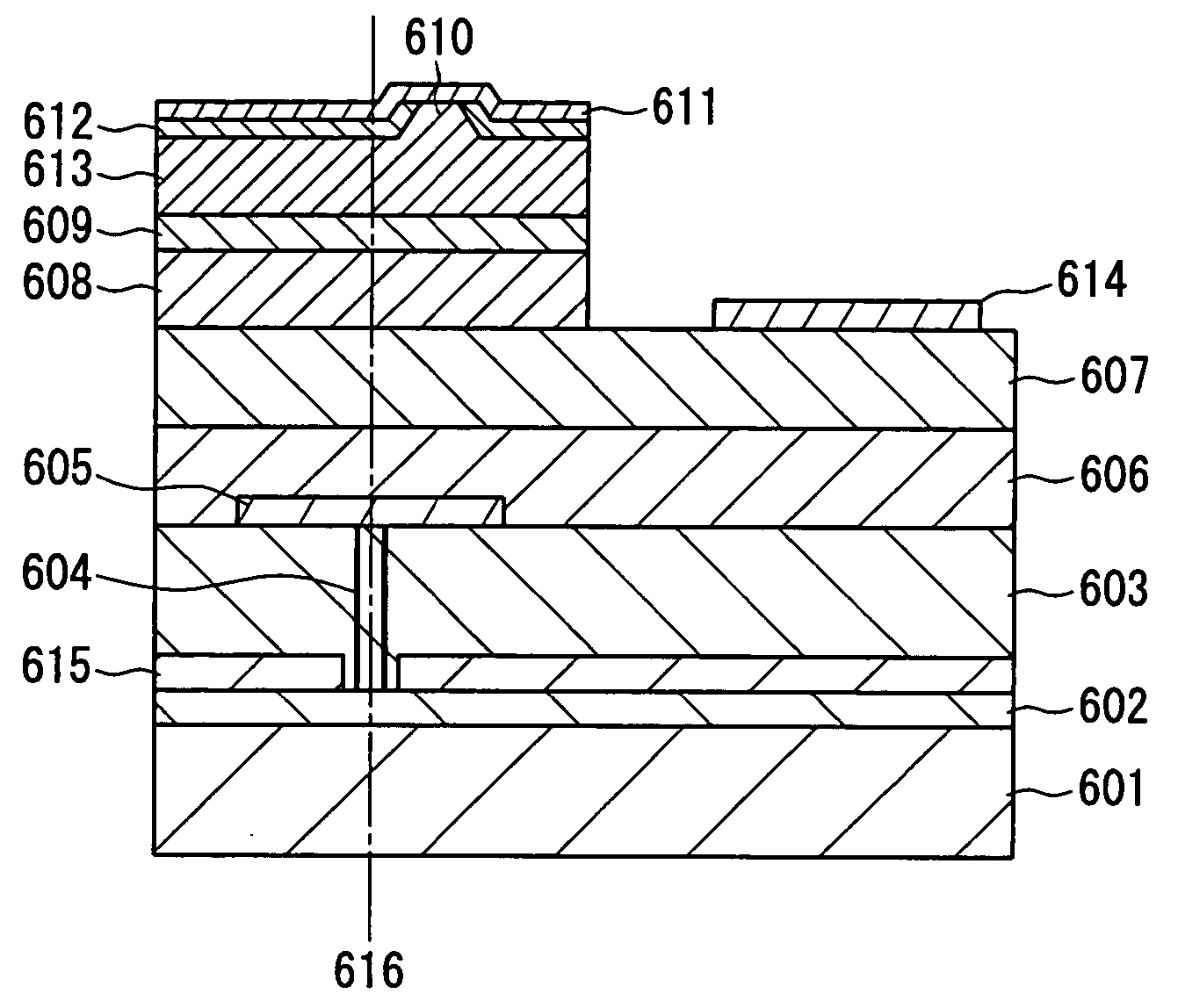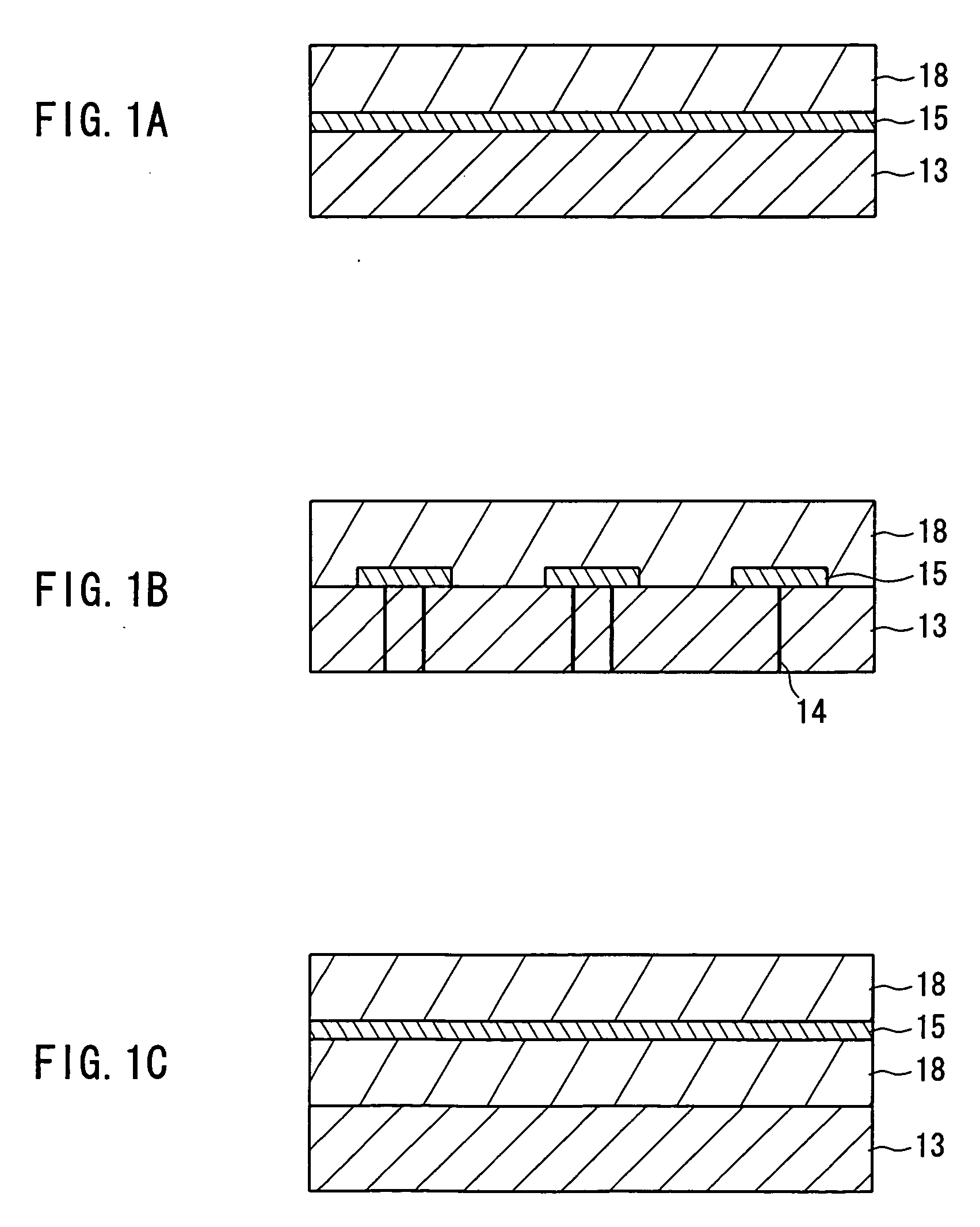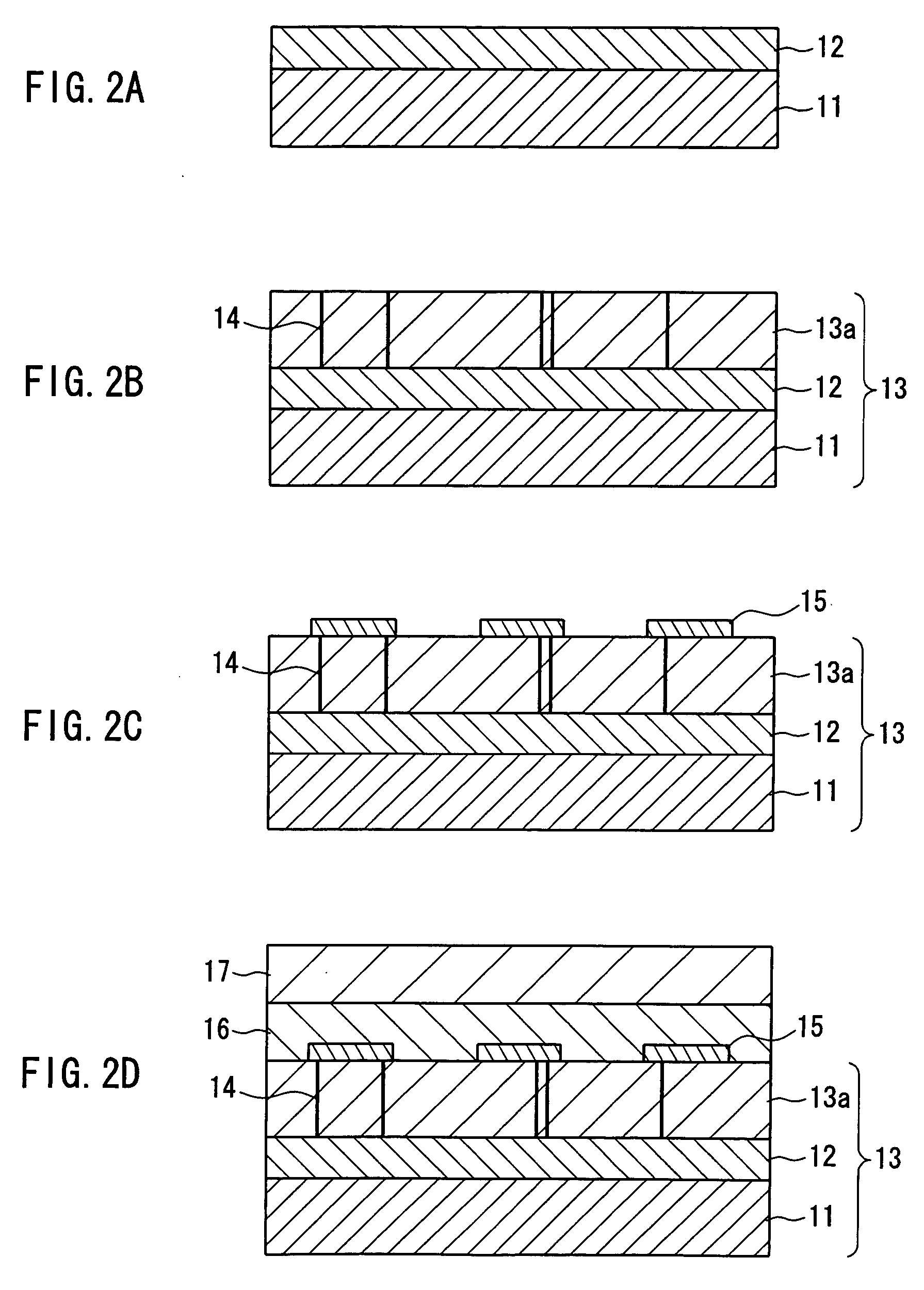Group-III-element nitride crystal semiconductor device
a nitride crystal, semiconductor technology, applied in the direction of semiconductor lasers, ceramic layered products, transportation and packaging, etc., can solve the problems of reducing the dislocation density, affecting the performance of the device, so as to achieve the effect of reducing the diffusion coefficien
- Summary
- Abstract
- Description
- Claims
- Application Information
AI Technical Summary
Benefits of technology
Problems solved by technology
Method used
Image
Examples
example 1
[0048] Example 1 is directed to an example of producing a semiconductor device using Group-III-element nitride crystals that are grown by the liquid phase epitaxy method on a seed layer formed selectively.
[0049] First, as shown in FIG. 3A, a support substrate 21 made of sapphire is heated to a temperature of about 1020° C. to 1100° C. and then trimethylgallium (TMG) and NH3 are supplied onto the substrate. Thus, a GaN semiconductor seed layer 22 is formed.
[0050] Next, a resist pattern is formed on the surface of the semiconductor seed layer 22 by photolithography. Subsequently, as shown in FIG. 3B, the semiconductor seed layer 22 is patterned by dry etching using Cl2 gas. The dry etching can be carried out using a reactive dry etching (RIE) apparatus of an inductive coupling type.
[0051] Subsequently, the resist pattern is removed and thus the semiconductor seed layer 22 is patterned. In addition, masks may be formed on the side faces of the semiconductor seed layer 22 and the sur...
example 2
[0066] An example of the configuration of a semiconductor laser is shown in FIG. 6. As shown in FIG. 6, first, a contact layer 52 of n-type GaN doped with Si to have a carrier density of 5×1018 cm−3 or lower was formed on a GaN substrate 51 having a thin film layer (not shown in FIG. 6). In GaN-based crystals (crystals containing Ga and N), when Si is added thereto as an impurity, holes present in Ga increase in number. Since the holes present in Ga diffuse easily, they have harmful effects in terms of, for example, lifetime when a device is formed thereon. Hence, the doping amount may be controlled so that the contact layer has a carrier density of 1×1019 cm−3 or lower, preferably 3×1018 cm−3 or lower.
[0067] Next, a cladding layer 53 of n-type Al0.07Ga0.93N and a light guiding layer 54 of n-type GaN were formed sequentially on the contact layer 52. Subsequently, a multiple quantum well (MQW) composed of a well layer (with a thickness of about 3 nm) made of Ga0.8In0.2N and a barrie...
example 3
[0070] Another configuration of the semiconductor laser is shown in FIG. 7. In FIG. 7, numeral 601 indicates a support substrate, numeral 602 a seed layer, numeral 603 an LPE-GaN layer, numeral 604 threading dislocations, numeral 605 a thin film layer, numeral 606 a GaN layer, numeral 607 an n-type GaN layer, numeral 608 an n-type cladding layer, numeral 609 an active layer, numeral 610 a ridge part, numeral 611 a p-side electrode, numeral 612 an insulating film, numeral 614 an n-side electrode, numeral 615 a selective growth film, and numeral 616 a symmetry axis. As shown in FIG. 7, the ridge region 610 to serve as a laser oscillation part is located above the thin film layer 605 but is formed so as not to align with the symmetry axis 616 of the thin film layer 605. The epitaxial film (i.e. the GaN layer 606), which grows from a vapor phase on the thin film layer 605, grows from the regions where the thin film layer 605 is not located thereon and portions of the epitaxial film grow...
PUM
| Property | Measurement | Unit |
|---|---|---|
| thickness | aaaaa | aaaaa |
| thickness | aaaaa | aaaaa |
| melting point | aaaaa | aaaaa |
Abstract
Description
Claims
Application Information
 Login to View More
Login to View More - R&D
- Intellectual Property
- Life Sciences
- Materials
- Tech Scout
- Unparalleled Data Quality
- Higher Quality Content
- 60% Fewer Hallucinations
Browse by: Latest US Patents, China's latest patents, Technical Efficacy Thesaurus, Application Domain, Technology Topic, Popular Technical Reports.
© 2025 PatSnap. All rights reserved.Legal|Privacy policy|Modern Slavery Act Transparency Statement|Sitemap|About US| Contact US: help@patsnap.com



